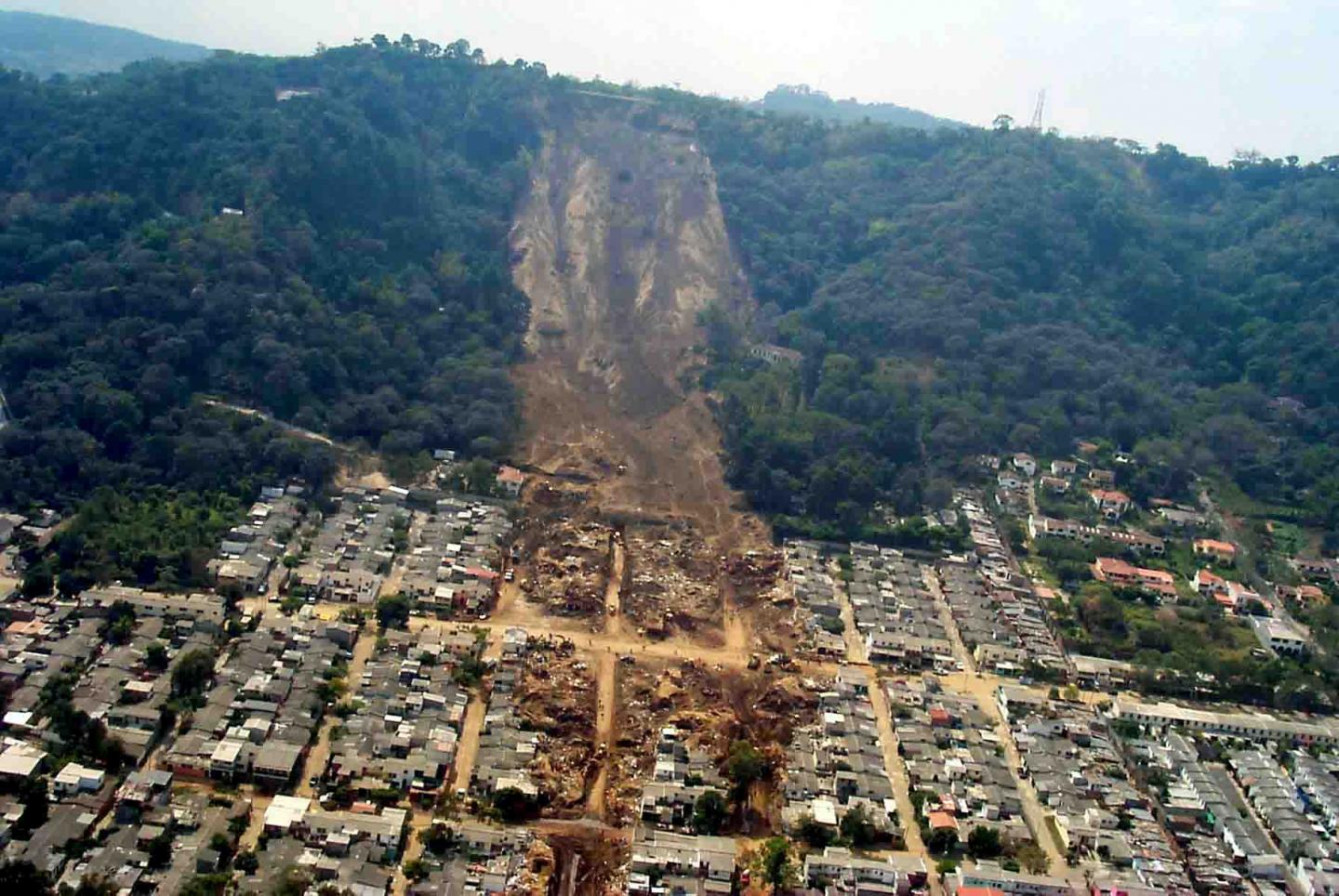
An earthquake-induced landslide in El Salvador in 2001. Credit: US Geological Survey
The 2008 Wenchuan earthquake in Sichuan, China, killed tens of thousands of people and left millions homeless. About 20,000 deaths — nearly 30 percent of the total — resulted not from the ground shaking itself but from the landslides that it triggered.
A model developed by researchers at Indiana University can help experts address such risks by estimating the likelihood of landslides that will be caused by earthquakes anywhere in the world. The estimates can be available within minutes, providing potentially life-saving information to people who are affected by earthquakes and the agencies and organizations charged with responding to them.
“Earthquakes can be devastating, horrific and stressful events,” said Anna Nowicki Jessee, a postdoctoral research fellow in the IU Bloomington College of Arts and Sciences’ Department of Earth and Atmospheric Sciences who developed the model. “The ultimate goal of this work is that fast, regional estimates of landslide occurrence would provide a way for those who are affected to receive the aid they need more quickly and efficiently.”
The model, based on data from past earthquakes and landslides, will be incorporated into the U.S. Geological Survey’s Ground Failure tool, which will be part of the USGS earthquake reporting system.
A paper describing the model has been published in the Journal of Geophysical Research: Earth Surface. Authors, in addition to Jessee, include Michael Hamburger and Scott Robeson of IU Bloomington and colleagues at the U.S. Geological Survey and the University of Twente in the Netherlands.
The model describes a mathematical relationship between where landslides happen and five key variables: how much the ground shook during an earthquake; the steepness of the ground; the type of rock affected; an estimate of how wet the ground is; and what type of land cover is present. The researchers tested multiple versions based on past earthquake-triggered landslides and selected the model with predictions that best matched where landslides occurred.
By entering data for ground shaking for a specific earthquake — available anywhere around the globe from the U.S. Geological Survey ShakeMap tool — scientists will be able to use the model to produce a map showing the probability of landslides in areas near the quake. Available within minutes, the results could provide this information quickly to agencies that assist affected populations.
Landslides are the third-largest contributor to earthquake deaths, after building collapse and tsunamis. From 2004 to 2010, earthquake-induced landslides caused an estimated 47,000 deaths. Damaging quakes often occur in remote and mountainous regions with limited transportation and communication networks, where landslides can block roads and impede emergency-response and relief efforts.
“The best part for me,” Jessee said, “is the idea that this product can be used to actually help people who are impacted by landslides caused by earthquakes.”




